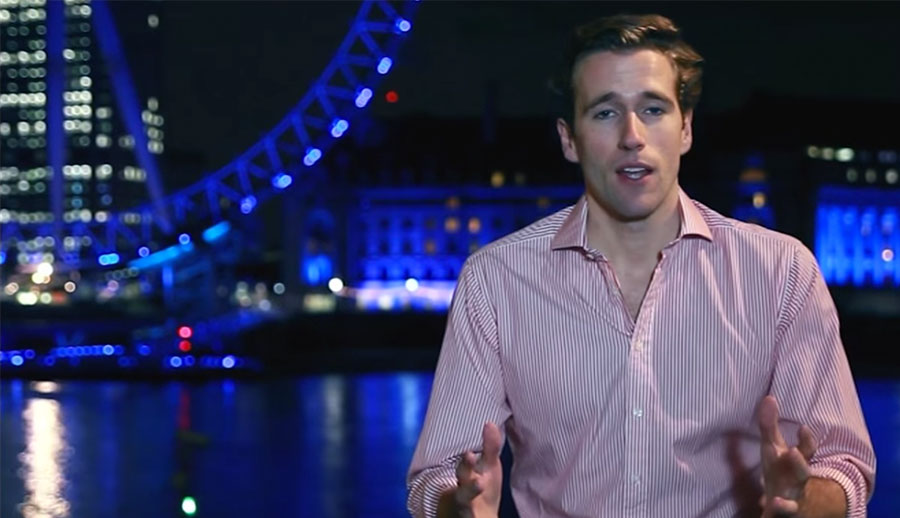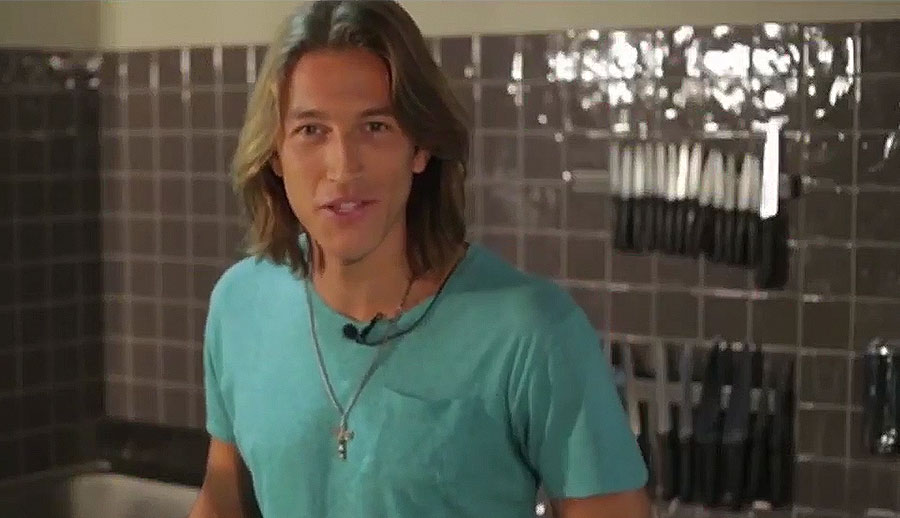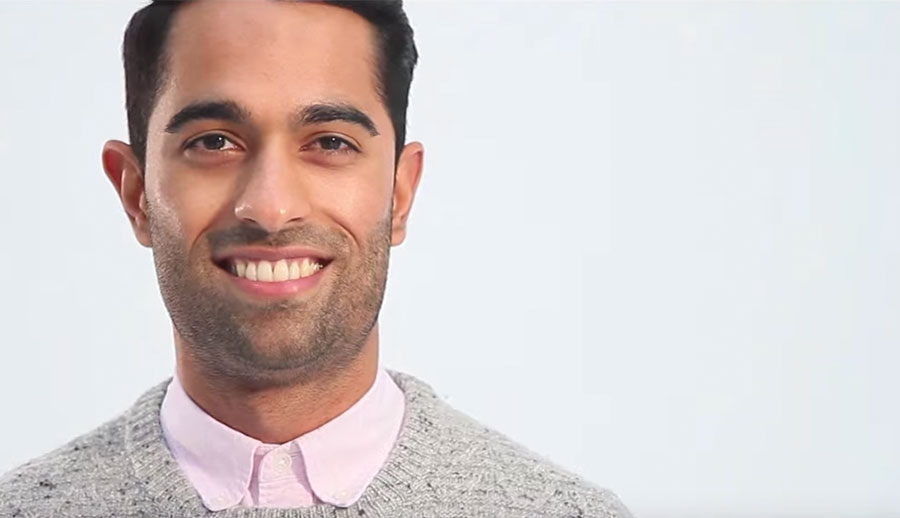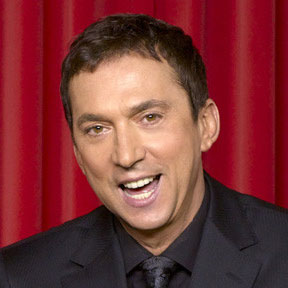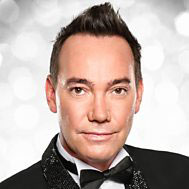-
.
-
1 To 1 Programme
- Tailor-made presenter coaching/filming on location, studio or both for presenters, influencers or business people to maximise your potential.
- Work with BAFTA winning Producers and BBC Talent Executives for the BBC, ITV, Channel 4 and top brands like ASOS, Amazon & Vogue.
- You’ll learn OUR secrets that have helped create TV’s and social media's biggest presenters.
- We are the ONLY presenter training company endorsed by TV agents and TV channels.
- Includes an initial consultation to discuss your needs, personal brand, how to market yourself and ideas for your filming day.
- Incredible success rate - 100% 5 star reviews. Amazing exclusive job and networking opportunities.
WHY WE’RE VOTED THE BEST
Displaying items by tag: presentation skills coaching
How Can I Train My Presentation Skills
If you’ve ever asked yourself, “How can I train my presentation skills?” — you’re not alone. Whether you’re delivering a pitch, speaking at an event, or presenting on camera, strong presentation skills are now essential in almost every industry. But here’s the good news: great presenters aren’t born, they’re trained.
At The Presenter Studio, we’ve worked with everyone from CEOs to creatives, helping them to find their voice, grow in confidence, and connect with their audience. So if you’re looking to improve your presentation skills, here are some smart, practical steps to get started.
1. Don’t Just Learn the Rules – Learn About Yourself
There’s no one-size-fits-all when it comes to presenting. One of the biggest mistakes people make is trying to copy someone else’s style. Instead, presentation skills training should be about finding your own voice — and then developing it.
Ask yourself: How do I naturally communicate? What tone suits me best? What does my personal or business brand sound like? A good training programme won’t turn you into someone else. It will help you become a more confident, authentic version of yourself.
2. Work on the Structure of Your Content
Great presentation skills are about more than confidence — they’re about clarity. A clear, compelling structure helps your audience follow your message and stay engaged. A strong opening, well-paced middle, and memorable close are essential. Writing everything out first and then cutting back is a technique we teach often — it helps you stay natural but concise.
3. Focus on Connection, Not Perfection
One of our core beliefs is: Don’t present. Connect. Your job isn’t to impress your audience — it’s to reach them. That means making eye contact, showing warmth, and speaking with passion. It’s okay to be human. In fact, it’s more engaging when you are.
4. Practice Smart, Not Just Hard
Rehearsal is important, but it’s how you rehearse that counts. Practice out loud, not just in your head. Film yourself to review tone, pace, and body language. Run through your presentation in different environments. And get feedback — ideally from a professional coach who can help you fine-tune both content and delivery.
5. Get Tailored Training That Fits You
The best way to train your presentation skills is to work with someone who understands your unique goals, personality, and brand. At The Presenter Studio, we create bespoke presentation training that helps you sound like you — at your best. No scripts. No generic advice. Just real, results-driven coaching tailored to who you are and what you want to achieve.
Want to train your presentation skills with us?
Explore our bespoke courses at: https://www.presenterstudio.com/business-presenter-training/presentation-skills-training
Why Your Presentation Should Reflect the Brand of Your Business
Every time you or someone in your team stands up to present, you’re not just sharing information — you’re representing your brand. And that brand isn’t just a logo or a strapline. It’s a tone, a personality, a feeling. So your presentation needs to do more than inform. It needs to embody who you are as a business.
Too often, presentations fall into the trap of being generic. The slides look like they’ve come from a template, the language is bland, and the delivery could belong to just about anyone. But in a crowded marketplace, what makes people remember you is your distinctiveness. That’s where brand-led presenting comes in.
When your presentation reflects your brand, it immediately builds trust. It shows that you know who you are, what you stand for, and how you want to be seen. Whether your business is bold and disruptive, thoughtful and caring, creative and quirky — your presentation style should mirror that. It’s all about consistency.
The tone of your delivery, your body language, your choice of visuals, your energy — all of these elements are opportunities to bring your brand to life. You become a living, breathing example of what your business is all about. And that’s far more powerful than just reading bullet points off a slide.
At The Presenter Studio, we don’t believe in off-the-shelf training. We work with you to develop a presentation style that’s unique to you and fully aligned with your brand. Because your voice, your team, and your message should feel like a seamless extension of your company’s identity.
So next time you prepare to speak, ask yourself: does this sound and feel like us? If not, it’s time to rethink your approach. A great presentation doesn’t just land a message — it strengthens your brand.
To find out more about our bespoke presentation training for individuals and teams, visit: https://www.presenterstudio.com
Presentation Skills Training: The Importance of Personal Branding
When it comes to presentation skills, there's no such thing as one-size-fits-all. Yet so many courses still teach rigid rules and formulas, trying to mould everyone into the same speaker. At The Presenter Studio, we believe the best presentations come from people who sound like themselves. Not scripted. Not stiff. But authentic, confident, and unmistakably them.
Personal branding lies at the heart of great presentation skills. It’s not just what you say – it’s how you say it, and who you are when you say it. Your voice, your style, your personality – these are the things that make people sit up and listen. The goal isn’t to present like someone else. It’s to present like the best version of you.
That’s why we always say: don’t go on a course where it’s one rule fits all. If you’re being taught to copy someone else’s style, you’re not learning how to communicate – you’re learning how to imitate. And imitation never connects the way authenticity does.
Your presentation should reflect who you are. If you’re bold and high-energy, that should shine through. If you’re calm and thoughtful, that’s your superpower. We’ll help you find your natural rhythm, tone, and pace – so that everything you say feels true to you.
When personal branding is at the core of your presentation, your audience knows what they’re going to get. They feel your passion. They trust your message. They believe in your delivery because it’s coming from a place that’s real.
At The Presenter Studio, our presentation skills training is entirely bespoke. We don't train you to fit a mould – we help you break it, so your voice, story, and presence are fully aligned. It’s about helping you stand out, not blend in.
To learn more about how we can help you develop your personal brand and become a more powerful communicator, visit: https://www.presenterstudio.com/business-presenter-training/presentation-skills-training
Why Structure Is the Secret Weapon of Every Great Presentation
This week, I attended a presentation that really drove home one of the most common and costly mistakes we see at The Presenter Studio: a lack of structure. The speaker had interesting ideas and a clear passion for the subject, but they never quite got going. The talk drifted. There was no rhythm, no momentum, and no clear message. As an audience member, it was hard to stay engaged because we were all waiting for it to start making sense — and that moment never quite came.
When we work with clients, we always talk about structure being the backbone of a great presentation. It gives your content shape. It guides your audience through the story. And, crucially, it respects their time and attention.
One of the first things to think about is your opening. A lot of people take far too long to get started. They spend precious minutes introducing themselves, explaining what’s coming, or thanking people. But in today’s world, people want to get into the content quickly. If you think about any good TV show, it doesn’t meander at the top. It hooks you straight away. It draws you in with something interesting, then gets on with the story, the competition, or the drama.
Your presentation should do the same. A snappy, focused intro can set the tone and establish your authority. But it should be just that — a start, not the main event.
From there, your structure should take your audience on a clear journey. This might sound simple, but it’s something a lot of people forget. Without a roadmap, even the best content can feel confusing or disjointed. Structure creates flow. It helps people follow your ideas and understand how each part of your talk connects to the next.
It also helps you manage time. One of the biggest signs a presentation lacks structure is when it overruns or ends in a rush. Structure gives you natural time markers. It tells you when to move on, where your turning points are, and how to land a clear, memorable ending.
Another benefit of structure is that it allows you to lead rather than list. Presentations can easily become a series of bullet points or facts. But people don’t want information dumped on them. They want to be guided. Structure lets you build a case, tell a story, or deliver a message in a way that’s easy to absorb and enjoyable to follow.
So next time you’re preparing a presentation, ask yourself:
Am I starting strong?
Is there a clear flow to the content?
Does each section serve a purpose?
Am I keeping to time?
And most importantly — am I leading the audience through an experience?
If you’re unsure, it might be time to rethink how you structure your talk. Because when the structure is strong, everything else falls into place.
If you want help creating structured, confident, and compelling presentations, take a look at our presentation skills training. You’ll find more information at https://www.presenterstudio.com/business-presenter-training/presentation-skills-training.
The Presentation That Went Wrong - And Why It’s Worth Talking About
The Presentation That Went Wrong — And Why It’s Worth Talking About
Yesterday, I sat through a presentation that was a good reminder of the mistakes people make. We’ve all been there - hoping to be inspired or at least informed, but instead finding ourselves distracted, disengaged, and looking at the clock.
But as frustrating as those moments are, they also offer something incredibly valuable: perspective. It was a reminder of how quickly a presentation can go off track - and how easily the audience’s attention can slip away - when you forget the basics.
At The Presenter Studio, we always say the fundamentals are everything. No matter how great your content is, or how beautiful your slides look, without the three fundamentals - Passion, Eye Contact, and First Impressions - your presentation is going to fall flat.
Here’s what happened yesterday, and how it reaffirmed just why we focus on these three pillars in every presentation skills course we deliver.
1. Passion — Because People Feel More Than They Listen
From the first minute of the talk, it was clear something was missing. The speaker walked on stage and began reading directly from their phone - eyes down, voice monotone, no connection to the room. It felt like they were going through the motions, not sharing something they cared about.
That’s the problem with passion - or the lack of it. When a speaker isn’t engaged, it’s almost impossible for the audience to engage either. Passion isn’t just about volume or excitement - it’s about authenticity. It’s about showing your audience that this matters to you. That you believe in what you’re saying.
In our presentation skills course, we spend time helping people connect to their why. Why does this topic matter to you? What excites you about it? And more importantly - how do you communicate that excitement so your audience feels it too?
People want to be inspired, not just informed. If you’re passionate, they’ll be curious. If you’re not, they’ll tune out.
2. Eye Contact - The Easiest Way to Build Connection
Next came the second missed opportunity: eye contact.
Throughout the presentation, the speaker barely looked up. Eyes were glued to their screen. If they did glance at the audience, it was fleeting — just long enough to lose their place and return to their phone. And that, right there, is the moment you lose trust.
When you’re presenting, you’re not delivering a script - you’re having a conversation. And just like in any good conversation, eye contact is what builds trust, connection, and attention. Without it, your audience feels like you’re not really speaking to them - just speaking at them.
It’s one of the most common challenges we help people overcome in our presentation skills courses. Nervous presenters often avoid looking at the audience altogether - which is understandable. After all, it can be off-putting if people seem disinterested, or are checking their phones or taking notes.
But the truth is, eye contact is one of the fastest ways to pull people back in. Look at them - and they’ll look back. Engage them - and they’ll engage you.
We teach simple techniques for building natural, confident eye contact, so that your delivery feels more like a conversation than a performance.
3. First Impressions - Set the Tone or Risk Losing the Room
Finally, let’s talk about what might have been the biggest issue of all: the opening.
The presentation started late - almost 20 minutes behind schedule. No explanation, no sense of urgency. Just a slow trickle into a talk that lacked any kind of spark or direction. The energy was low. The pace was slow. The opening meandered without making a clear point.
And in those first five minutes, you could feel the audience switch off.
This is something we can’t stress enough: First impressions matter. A lot.
In our presentation skills course, we focus heavily on crafting strong openings - because we know how vital they are. Whether it’s a keynote speech, a boardroom pitch, or a virtual webinar, your opening is your first and best chance to hook your audience.
Start with a story. Ask a provocative question. Set the agenda with purpose and clarity. Show them why this is worth listening to.
When you don’t, you give people permission to disengage. They’ll check their phones. They’ll stop listening. And once you’ve lost them, it’s incredibly hard to win them back.
The Takeaway: Get the Basics Right, and the Rest Will Follow
It’s easy to overcomplicate public speaking. Fancy slides, big words, dramatic pauses - they all have their place. But without the fundamentals - Passion, Eye Contact, and First Impressions - none of it really works.
What I saw yesterday reminded me of why we do what we do at The Presenter Studio. Our presentation skills course is designed not just to teach you how to present, but how to truly connect with your audience, own the room, and feel confident doing it.
Whether you're a business leader, a creative professional, or someone who just wants to feel more confident speaking in front of others, the fundamentals are the same — and we can help you master them.
Want to Present Like a Pro?
If you’re ready to elevate your communication and presentation skills, join one of our presentation skills courses today. Whether it's online or in-person, private coaching or group training, we’ll help you find your voice, own your story, and deliver with impact.
Because when the basics are strong, everything changes.
For more information on our presentation skills courses visit: https://www.presenterstudio.com/business-presenter-training/presentation-skills-training
Why Every Professional Should Take a Presentation Skills Course
Why Every Professional Should Take a Presentation Skills Course
Strong presentation skills are no longer a nice-to-have—they're essential in today's competitive job market. Whether you’re pitching to clients, delivering team updates, or leading a workshop, the ability to present clearly and confidently can set you apart.
A presentation skills course gives you the tools to speak with authority and authenticity. You’ll learn how to build persuasive arguments, craft stories that connect with your audience, and deliver your message with confidence.
More than that, it builds your presence. Great presenters are memorable because they’re not just speaking—they’re performing. In our presentation skills courses, we teach you how to own the room, read the audience, and make a lasting impression.
Public speaking is also one of the top fears people have. But like any skill, it improves with the right guidance and practice. A good course provides a safe space to overcome anxiety and develop new strengths.
If you're aiming for career progression, leadership roles, or simply want to boost your communication skills, investing in a presentation skills course is one of the smartest professional moves you can make.
To find out more about how we can help you visit https://www.presenterstudio.com/business-presenter-training/presentation-skills-training or email This email address is being protected from spambots. You need JavaScript enabled to view it.
Essential Skills You’ll Learn in a Presentation Skills Course
5 Essential Skills You’ll Learn in a Presentation Skills Course
Enrolling in a presentation skills course can be a transformative experience. Whether you’re a business leader, manager, or new graduate, mastering these core skills will elevate your ability to communicate effectively.
One of the first skills you'll develop is structuring your presentation. You’ll learn how to open strong, deliver key messages with clarity, and end with a powerful conclusion that resonates with your audience.
Next, delivery techniques are key. A good course will train you in how to use your voice, gestures, and facial expressions to enhance your message. These techniques are what transform a dull talk into a memorable performance.
You'll also build confidence in managing nerves. Through guided practice and feedback, you'll learn techniques such as breath control and visualisation to stay calm under pressure.
A presentation skills course also teaches how to engage an audience. This includes the use of storytelling, rhetorical questions, and audience interaction to maintain attention.
Finally, you’ll gain the ability to adapt. From boardrooms to conferences, you'll learn how to tailor your delivery to suit different settings and audiences.
Each of these skills is covered in-depth in our presentation skills courses, ensuring you're ready for any speaking challenge.
To find out more about how we can help you visit https://www.presenterstudio.com/business-presenter-training/presentation-skills-training or email This email address is being protected from spambots. You need JavaScript enabled to view it.
Top 10 Proven Tips to Master Your Presentation Skills
Top 10 Proven Tips to Master Your Presentation Skills:
Presentations are a critical skill in both personal and professional settings. Whether you're presenting in a boardroom, at a conference, or in front of a classroom, the ability to effectively communicate your ideas can make a significant difference in your success. However, mastering presentation skills isn't something that happens overnight. It requires practice, reflection, and an understanding of various techniques. In this article, we’ll explore ten proven tips to help you enhance your presentation skills and truly engage your audience.
1. Develop Your Own Style. The most effective presenters are not the ones who mimic someone else’s delivery. They are the ones who have developed their own unique style. This is important because your style should reflect who you are and make you feel comfortable while presenting. Whether you're energetic and lively or calm and composed, your style should align with your personality and strengths. A presenter who is authentic is much more engaging and relatable. Trying to adopt someone else’s persona often feels forced and can distract both you and the audience from the message you're trying to convey. Take time to explore different methods of presenting. Once you discover your authentic presentation style, you’ll naturally feel more at ease and confident, which will resonate with your audience.
2. Make Sure Your Style Works with Your Brand. Your presentation style should not only reflect your personality but also fit within the context of your personal or professional brand. Whether you're an entrepreneur, a corporate leader, or a teacher, your presentation style communicates your values and enhances your credibility. For example, if you’re a startup founder pitching an innovative idea, you might opt for an enthusiastic, fast-paced delivery. On the other hand, if you're presenting a corporate strategy to senior executives, you may need to adopt a more formal and measured tone. It’s important to understand that your presentation style is an extension of your personal or company brand. It helps shape how your audience perceives you. Ask yourself: "Does my presentation style align with the message I’m trying to communicate and the brand I want to project?" Consistency is key. If your style contradicts your brand, it can cause confusion and undermine your credibility. So, before presenting, reflect on what you want your audience to remember about you and ensure your style supports that goal.
3. Keep It Short and Sweet. We live in an era of information overload, and people’s attention spans are shorter than ever. If you’re presenting a long, drawn-out speech, your audience will likely tune out. One of the most effective ways to keep your audience engaged is to keep your presentation short and focused. Condense your message to its core points, ensuring that everything you say serves a clear purpose. When preparing your presentation, ask yourself, "What are the key takeaways I want my audience to remember?" Once you’ve identified these core ideas, structure your presentation around them and avoid adding unnecessary filler content. Be concise, and respect your audience’s time by sticking to your allotted time limit. If you make your presentation clear and to the point, you’ll leave your audience with a more lasting impression.
4. Write a Script. Although some people may find it restrictive, writing a script for your presentation can help organize your thoughts and make sure you don't miss important details. A script can be particularly helpful when preparing for more formal presentations, such as business pitches, lectures, or public speaking engagements. When you write a script, you have the opportunity to choose your words carefully, ensuring that every phrase aligns with your main message. However, a script shouldn’t be a word-for-word memorization. Rather, it should serve as a guide. Once you’ve written your script, practice delivering it aloud until you’re comfortable with the flow of words and transitions. Even if you don’t stick to the script exactly, it will give you a solid foundation and make your delivery feel more polished. Another great advantage of writing a script is that it allows you to test different approaches. If one part of your presentation doesn’t feel right, you can rework it until it sounds natural and effective. Think of the script as a tool to refine your ideas, rather than a rigid rulebook.
5. Eye Contact Is the Best Way to Cheat Confidence. One of the most powerful ways to convey confidence during a presentation is through eye contact. Maintaining good eye contact helps establish trust and creates a sense of connection with your audience. It also signals that you are engaged and present in the moment. Eye contact doesn’t just help others see that you’re confident; it also helps you feel confident. If you struggle with nervousness, try focusing on a few friendly faces in the crowd and make sure to connect with each person briefly. By doing so, you'll appear more confident than you feel, and the audience will respond positively. It’s important to avoid looking at the floor, ceiling, or your notes for extended periods of time, as this can make you seem disconnected or unsure of yourself. While making eye contact is important, be mindful of overdoing it. Staring intensely at one person for the entire presentation can make them uncomfortable. Instead, try to rotate your gaze around the room to ensure you engage with everyone in the audience.
6. Find Light and Shade. When delivering a presentation, the emotional tone of your voice plays a crucial role in maintaining engagement. Just like light and shade create depth in visual art, varying your tone of voice adds richness and dimension to your message. If you speak in a monotonous tone, your audience may lose interest quickly. To keep people engaged, use changes in your voice to emphasize key points, highlight important ideas, and convey emotions effectively. For example, when you’re about to make an important point, slow down your speech and lower your tone. This builds anticipation and draws your audience’s attention. Conversely, if you're discussing something exciting or energizing, raise your voice slightly and quicken your pace. Playing with the dynamics of your voice will keep your audience on their toes, and they’ll be more likely to remember what you said. In addition to vocal tone, the use of pauses can create "shade" in your presentation. Pausing at strategic moments not only gives you time to collect your thoughts but also gives your audience time to process the information. A well-placed pause can add emphasis to a point and keep your listeners engaged.
7. Engage Your Audience with Stories. One of the most effective ways to connect with your audience is by telling stories. People remember stories far better than they remember statistics or data points. A well-told story helps humanize your presentation and makes your message more relatable. You can use stories to illustrate key concepts or to demonstrate real-world applications of your ideas. When telling a story, make sure it is relevant to your presentation. Your audience will respond positively to anecdotes that help clarify or support your main message. Stories also provide an opportunity to show vulnerability and connect emotionally with your listeners, which builds rapport and trust. A great way to integrate storytelling is to start your presentation with a compelling personal story or a case study that sets the tone for the entire presentation. This approach hooks your audience from the beginning and sets up your key messages in a memorable way.
8. Master Non-Verbal Communication. While your words are crucial, your body language is just as important in conveying your message. Your non-verbal communication can reinforce or undermine what you're saying, so it’s essential to be mindful of how you present yourself physically. Use purposeful gestures to emphasize important points and to engage with your audience. Avoid crossing your arms, which can make you seem closed off or defensive. Instead, keep your body open, stand tall, and move naturally around the stage or area where you're presenting. Use your face and body to communicate as much as your words do.
9. Rehearse Like a Pro. There’s no substitute for practice when it comes to perfecting your presentation skills. Rehearse your presentation several times before the actual event. The more you practice, the more comfortable you’ll feel, and the better your delivery will be. Rehearse in front of a mirror, record yourself, or present to a friend or colleague. This will help you spot areas where you might be tripping up or where you can improve. When rehearsing, pay attention to your timing. Make sure your presentation fits within the time limit, and practice pacing yourself so you don’t rush through key points. You’ll also want to rehearse your transitions between slides or topics, ensuring the flow of your presentation is smooth and seamless.
10. Handle Questions with Confidence. One of the most nerve-wracking parts of any presentation is the Q&A session. However, how you handle questions can be just as important as your actual presentation. Prepare for potential questions ahead of time by anticipating what your audience might ask. This will help you feel more prepared and less anxious. When responding to questions, listen carefully and give thoughtful, concise answers. If you don’t know the answer to a question, don’t be afraid to admit it. Honesty and humility will earn you respect from your audience. You can always offer to follow up later with more information. During the Q&A session, maintain the same level of engagement as during your presentation. This shows that you are confident in your message and willing to engage with your audience in a meaningful way.
Conclusion. Mastering your presentation skills takes time and practice, but with these ten proven tips, you can enhance your abilities and leave a lasting impression on your audience. Developing your own style, keeping your presentation concise, engaging with eye contact and stories, and rehearsing thoroughly will ensure that you’re well-prepared to deliver a compelling message. By focusing on both the verbal and non-verbal aspects of communication, you’ll be able to connect with your audience and convey your ideas with confidence.
For help with your presentations check out the presentation training courses we offer here at The Presenter Studio: https://www.presenterstudio.com/business-presenter-training/presentation-skills-training
Presentation Skills Coaching - Kerb
A great business presenter coaching session for the team at KERB on presentation skills.
A tailor-made session all around finding your voice and building confidence in presentations.
It was a joy to work with the team. 12 clients. 4 hours. A packed session full of great learning around finding your voice, developing your own style, and working with the brand of Kerb.
Thanks everyone for making us feel so welcome and for so much great work!
Why We Set Up The Presenter Studio: Transforming Presentation Skills Training
Why We Set Up The Presenter Studio: Transforming Presentation Skills Training
Presentation skills training has long been stuck in a cycle of outdated techniques, generic courses, and uninspiring delivery. It’s an industry that has often felt grey, corporate, and lacking in creativity. That’s exactly why we created The Presenter Studio – to revolutionize how businesses and individuals approach presentations.
We saw a gap in the market for something fresh, modern, and impactful. With over 20 years of experience working with some of the world’s top presenters, we know that great presentations are not just about standing up and speaking clearly. They’re about storytelling, creativity, and delivering a message that connects.
In today’s fast-paced world, audiences expect more than just slides and a monotone voice. They want engagement, authenticity, and impact. The traditional methods of presentation training simply don’t cut it anymore. We stay ahead of the curve, incorporating the latest trends in communication, media, and branding. Our training is designed for the digital age – whether it’s presenting in-person, on video, or for social media. We help businesses and individuals develop a style that resonates today, not ten years ago.
No two presenters are the same, and no two businesses have the same needs. That’s why we don’t believe in a one-size-fits-all approach. Our training is completely bespoke, crafted to fit your brand, message, and personality. We work closely with clients to understand their unique challenges and goals, ensuring they walk away with a presentation style that feels authentic and impactful. Whether you’re a CEO, a startup founder, or a creative professional, we tailor our training to bring out the best in you.
Our approach is rooted in real-world experience. We’ve spent over two decades working with some of the biggest names in broadcasting, media, and business. From TV presenters to keynote speakers, we’ve helped professionals across industries craft compelling presentations that captivate audiences. This expertise allows us to bring insider knowledge, industry insights, and tried-and-tested techniques to our training. We know what works – and we know how to help you make an impact.
Let’s face it: traditional presentation training is often dull, rigid, and lacking in personality. We set up The Presenter Studio to break that mold. We believe presentations are a creative opportunity, not a chore. They should be dynamic, exciting, and memorable. Our approach brings energy, innovation, and a fresh perspective to an industry that desperately needs it. By challenging the outdated norms of presentation training, we help clients create something that stands out – whether it’s a pitch, a speech, or a company-wide address.
Your presentation is an extension of your brand. It’s not just about delivering information – it’s about making a lasting impression. Yet, many businesses fail to see presentations as an opportunity to do something unique and on-brand. We help our clients transform their presentations into powerful brand assets. Whether it’s refining the tone of voice, integrating visual storytelling, or ensuring consistency with brand messaging, we show businesses how to turn presentations into a powerful tool for engagement and impact.
The Presenter Studio was born out of a passion for change. We wanted to create a training experience that was dynamic, relevant, and tailored to the modern world. With our expertise, bespoke approach, and fresh perspective, we’re helping businesses and individuals redefine what it means to present with impact. If you’re ready to shake up the way you present, we’re here to help.
-
Watch Our Amazing Talent Taster Tapes
Talent Taster Tapes
We are the ONLY company to give you an industry recognised showreel.
That’s because we are the ONLY company to brand and market you for the genre of TV you are suited to.
In TV we call showreels 'Talent Taster Tapes' - and with us, that's what you'll get.
-
Optional Extras











